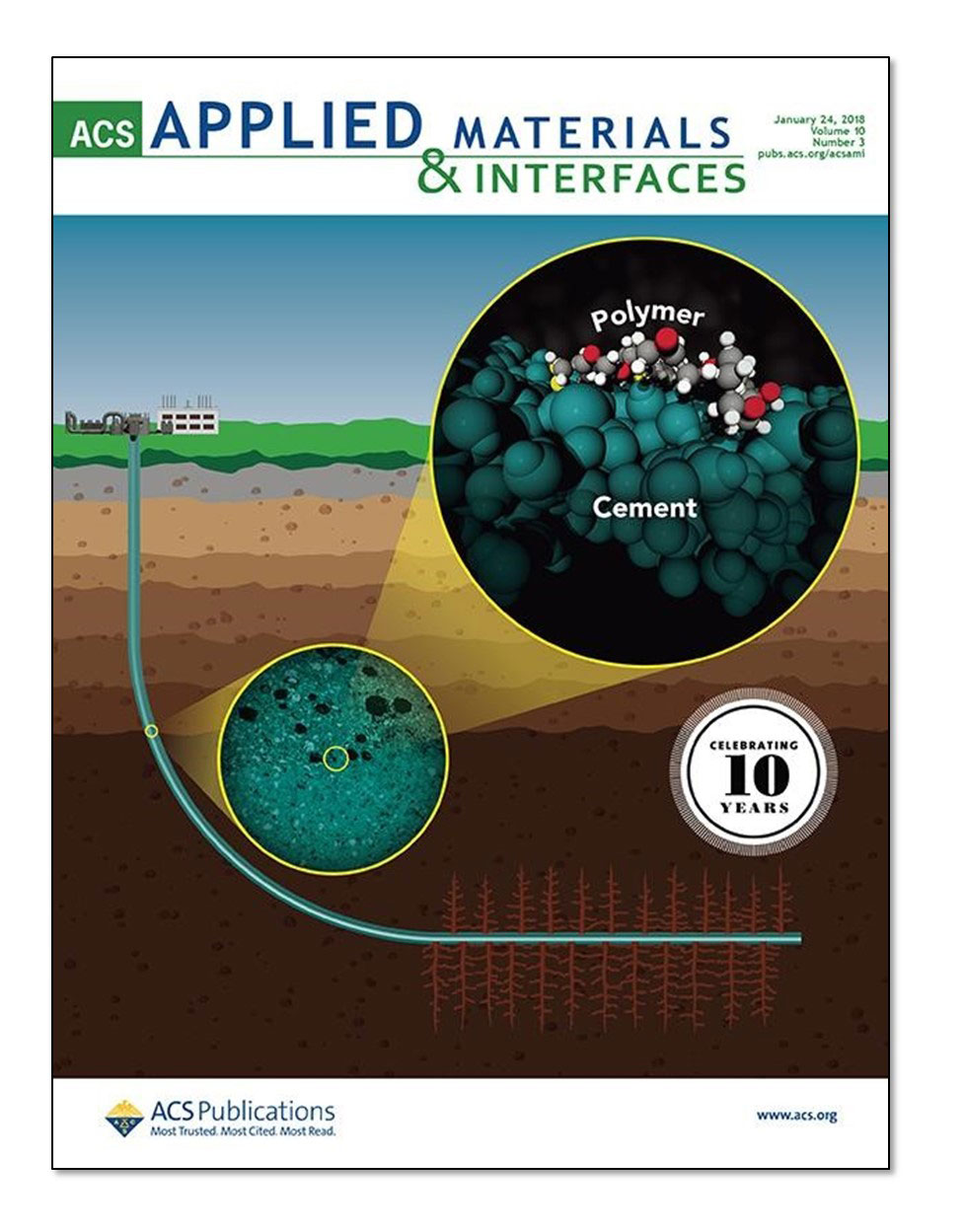Simulations Shed Light on Self-Healing Cement
A first-of-its-kind computer simulation reveals self-healing cement for geothermal and oil and gas wells performs better than originally thought.

The Science
Inevitably, the cement cracks in wells that bring heat, oil, and gas to the surface. Those cracks are expensive to fix. Researchers developed a unique self-healing cement—a composite of cement and a polymer— that can repair itself in as little as a few hours. Thanks to groundbreaking computer simulations, the team gained a new understanding about how the process works. Their findings will help identify potential weaknesses in the cement and improve its durability.
The Impact
Such a product could be a boon to geothermal applications and the oil and gas industry; wellbore cement—which surrounds pipes that bring oil and gas from deep wells to the surface—currently has a lifespan of only 30 to 40 years. When the cement cracks, which happens often, repairs can top $1.5 million per well. With thousands of subsurface wells running annually around the world, this new material could have a dramatic impact on the cost of energy production.
Summary
To understand how self-healing cement behaved at the molecular level, the team constructed a first-of-its-kind model based on density functional theory that simulates what occurs inside the cement/polymer system and used it in a series of simulations run on the National Energy Research Scientific Computing Center’s Edison supercomputer. They used large-scale ab initio molecular dynamics to model about 900 atoms over a month’s worth of computing time, involving ~500,000 CPU hours. Inspired by these findings, the team set out to investigate further using the Environmental Molecular Sciences Laboratory’s unique imaging capabilities. The molecular dynamics and sum frequency generation spectroscopy revealed how the self-healing cement works and showed that the cement may perform better than originally thought. The study also gave the team a better understanding of how and why the materials behave the way they do and may reveal ways to modify and potentially improve it further.
Contact
Vassiliki-Alexandra Glezakou
Pacific Northwest National Laboratory
[email protected]
Funding
To understand how self-healing cement behaved at the molecular level, the team constructed a first-of-its-kind model based on density functional theory that simulates what occurs inside the cement/polymer system and used it in a series of simulations run on the National Energy Research Scientific Computing Center’s Edison supercomputer. They used large-scale ab initio molecular dynamics to model about 900 atoms over a month’s worth of computing time, involving ~500,000 CPU hours. Inspired by these findings, the team set out to investigate further using the Environmental Molecular Sciences Laboratory’s unique imaging capabilities. The molecular dynamics and sum frequency generation spectroscopy revealed how the self-healing cement works and showed that the cement may perform better than originally thought. The study also gave the team a better understanding of how and why the materials behave the way they do and may reveal ways to modify and potentially improve it further.
Publications
M.T. Nguyen, Z. Wang, K.A. Rodt, et al., “Atomic origins of the self-healing function in cement–polymer composites.” ACS Applied Materials and Interfaces 10, 30011 (2018). [DOI: 10.1021/acsami.7b113309]
Related Links
Pacific Northwest National Laboratory highlight: Simulations Show How Atoms Behave Inside Self-Healing Cement
Highlight Categories
Performer: DOE Laboratory , SC User Facilities , ASCR User Facilities , NERSC , BER User Facilities , EMSL
Additional: Collaborations , EERE




